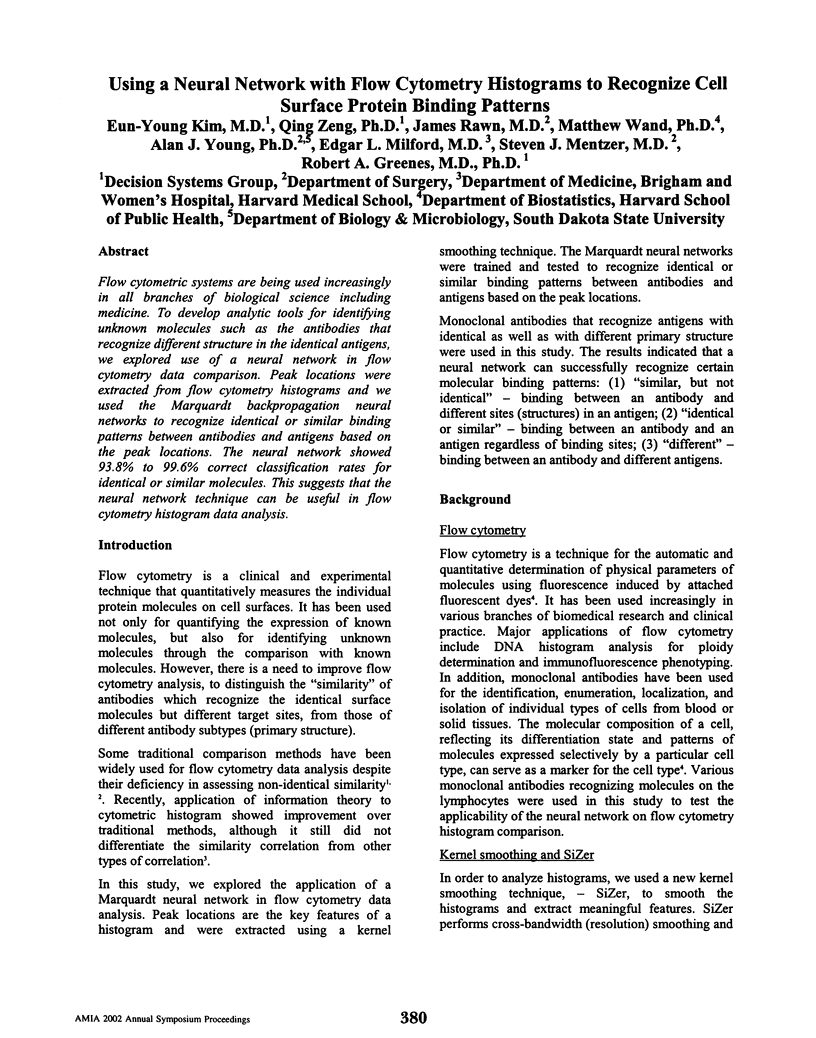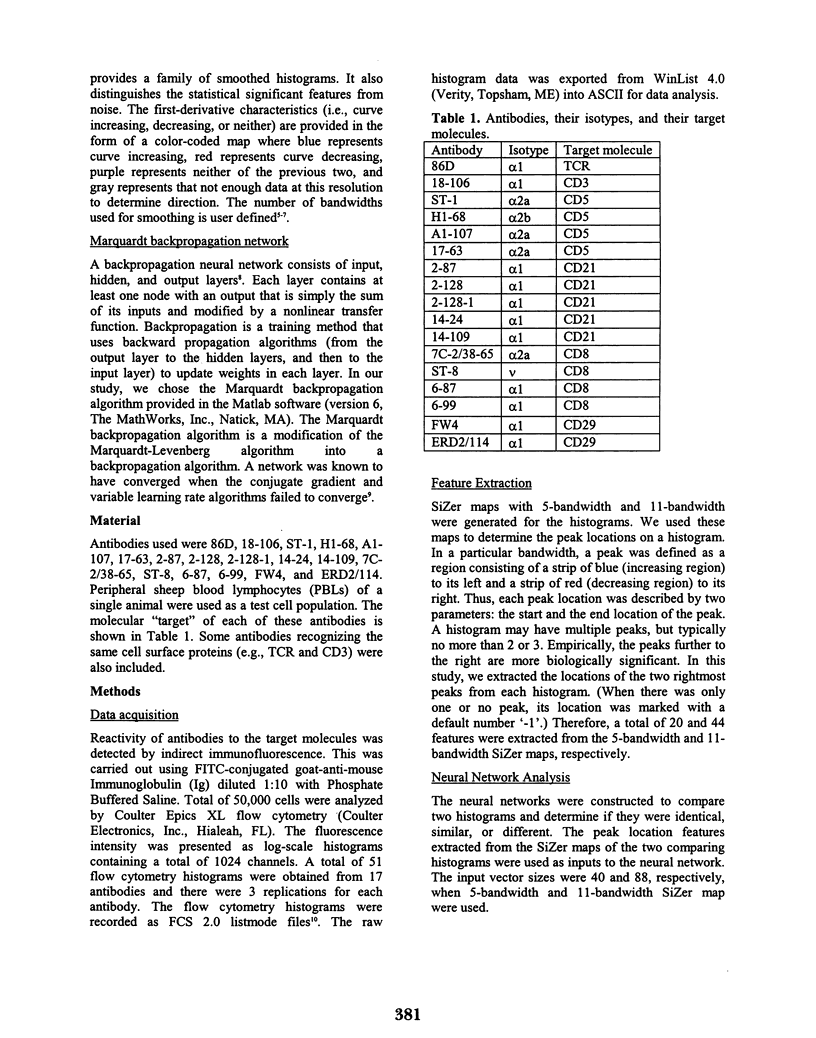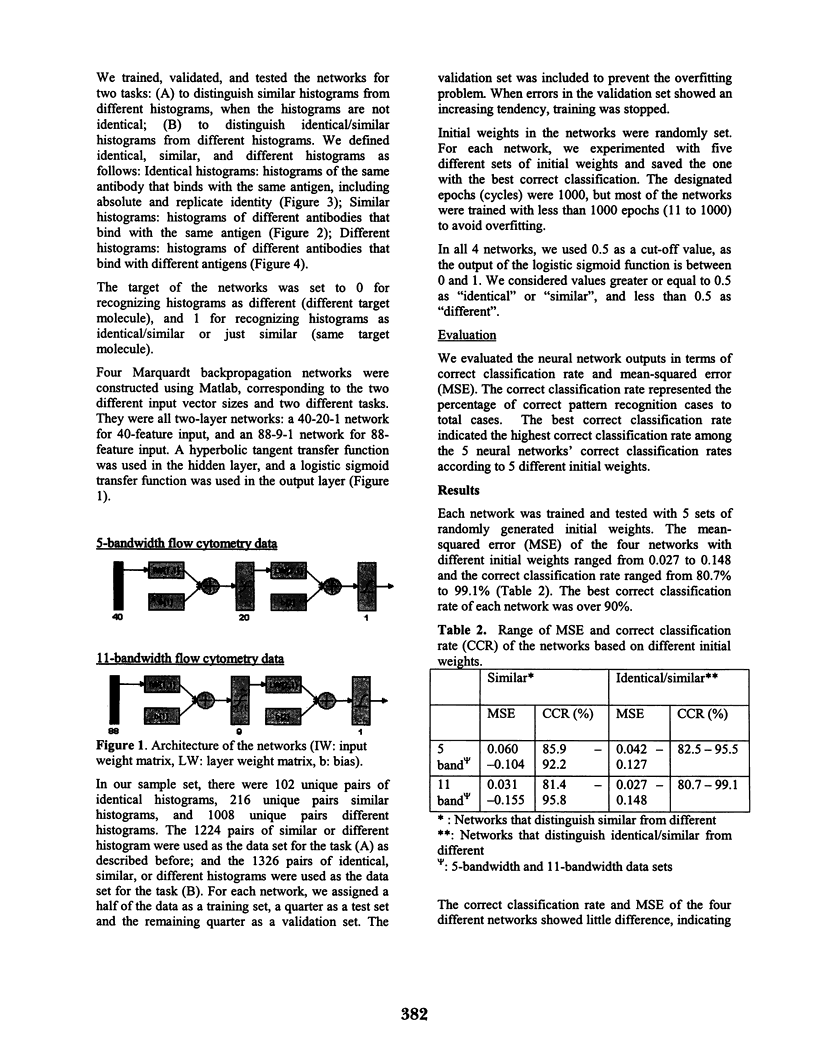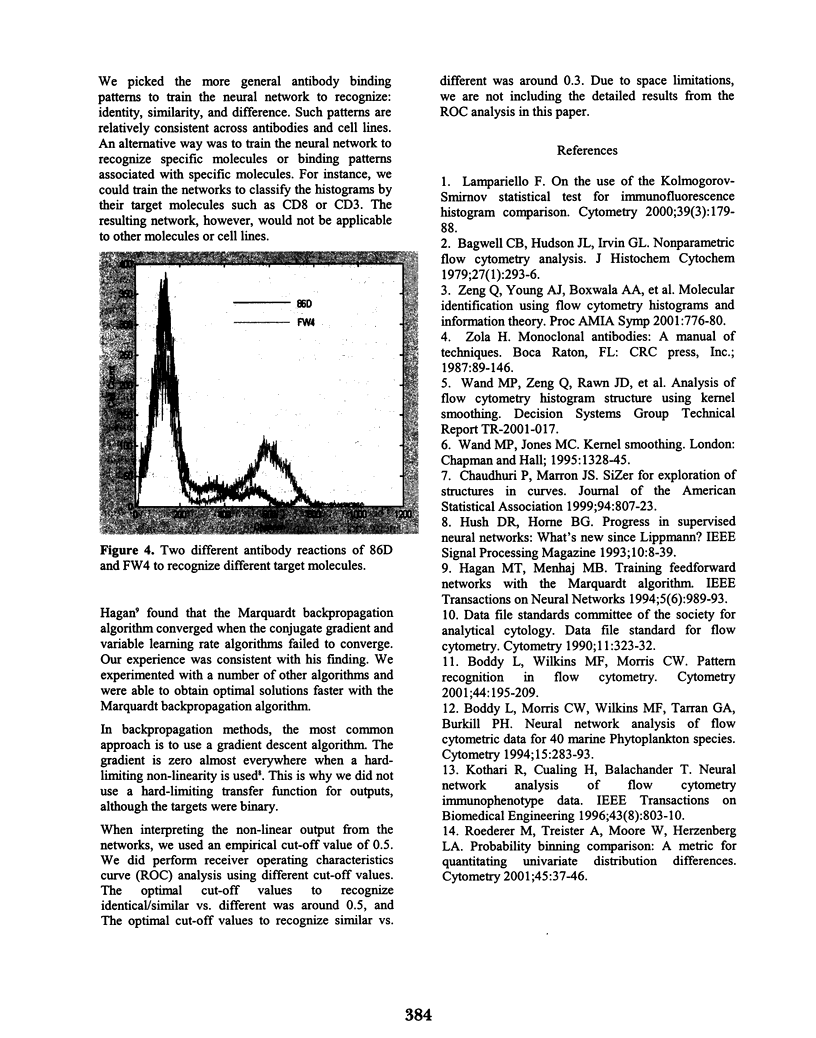Abstract
Flow cytometric systems are being used increasingly in all branches of biological science including medicine. To develop analytic tools for identifying unknown molecules such as the antibodies that recognize different structure in the identical antigens, we explored use of a neural network in flow cytometry data comparison. Peak locations were extracted from flow cytometry histograms and we used the Marquardt backpropagation neural networks to recognize identical or similar binding patterns between antibodies and antigens based on the peak locations. The neural network showed 93.8% to 99.6% correct classification rates for identical or similar molecules. This suggests that the neural network technique can be useful in flow cytometry histogram data analysis.
Full text
PDF




Selected References
These references are in PubMed. This may not be the complete list of references from this article.
- Bagwell C. B., Hudson J. L., Irvin G. L., 3rd Nonparametric flow cytometry analysis. J Histochem Cytochem. 1979 Jan;27(1):293–296. doi: 10.1177/27.1.374589. [DOI] [PubMed] [Google Scholar]
- Boddy L., Morris C. W., Wilkins M. F., Tarran G. A., Burkill P. H. Neural network analysis of flow cytometric data for 40 marine phytoplankton species. Cytometry. 1994 Apr 1;15(4):283–293. doi: 10.1002/cyto.990150403. [DOI] [PubMed] [Google Scholar]
- Boddy L., Wilkins M. F., Morris C. W. Pattern recognition in flow cytometry. Cytometry. 2001 Jul 1;44(3):195–209. doi: 10.1002/1097-0320(20010701)44:3<195::aid-cyto1112>3.0.co;2-h. [DOI] [PubMed] [Google Scholar]
- Kothari R., Cualing H., Balachander T. Neural network analysis of flow cytometry immunophenotype data. IEEE Trans Biomed Eng. 1996 Aug;43(8):803–810. doi: 10.1109/10.508551. [DOI] [PubMed] [Google Scholar]
- Lampariello F. On the use of the Kolmogorov-Smirnov statistical test for immunofluorescence histogram comparison. Cytometry. 2000 Mar 1;39(3):179–188. doi: 10.1002/(SICI)1097-0320(20000301)39:3<179::AID-CYTO2>3.0.CO;2-I. [DOI] [PubMed] [Google Scholar]
- Roederer M., Treister A., Moore W., Herzenberg L. A. Probability binning comparison: a metric for quantitating univariate distribution differences. Cytometry. 2001 Sep 1;45(1):37–46. doi: 10.1002/1097-0320(20010901)45:1<37::aid-cyto1142>3.0.co;2-e. [DOI] [PubMed] [Google Scholar]
- Zeng Q., Young A. J., Boxwala A., Rawn J., Long W., Wand M., Salganik M., Milford E. L., Mentzer S. J., Greenes R. A. Molecular identification using flow cytometry histograms and information theory. Proc AMIA Symp. 2001:776–780. [PMC free article] [PubMed] [Google Scholar]


